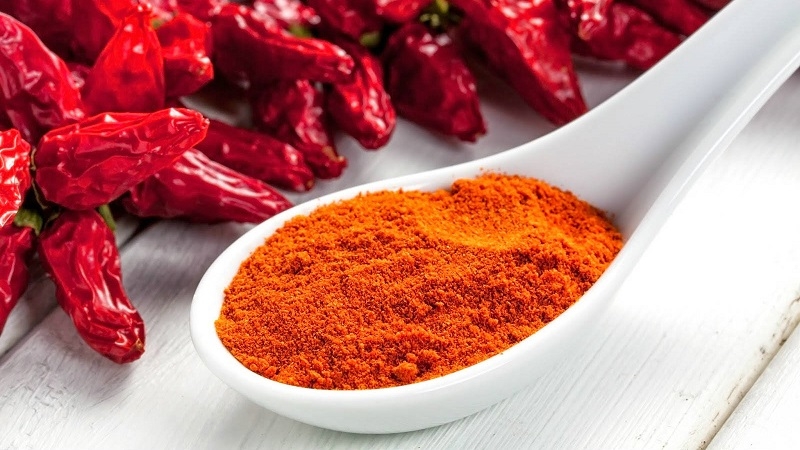- No. 268 Xianghe Street, Economic Development Zone of Xingtai city, Hebei 054001 China
- Byron@hbhongri.cn
Nutritional Benefits of Paprika per 100g Serving for a Healthy Diet
The Vibrant World of Paprika A Culinary Gem
Paprika, a spice derived from the dried fruits of Capsicum annuum, has long been celebrated for its vibrant color and distinct flavor. Originating from Central America, this spice has become a staple in various cuisines worldwide, particularly in Hungary, Spain, and various regions of the Mediterranean. In this article, we will delve into the rich history, types, health benefits, and culinary uses of paprika, specifically focusing on the significance of 100 grams of this remarkable spice.
A Brief History
The history of paprika is closely tied to the exploration and colonization of the Americas. When Christopher Columbus discovered the New World, he encountered a variety of peppers that were previously unknown in Europe. It wasn't long before these peppers made their way back to Europe, where they were cultivated and transformed into the delicious spice we know today. By the 17th century, Hungary had started producing its own paprika, leading to its association with Hungarian cuisine.
Types of Paprika
Paprika comes in several varieties, each with its own unique flavor profile and intensity. The most common types include
1. Sweet Paprika This is the most widely used type of paprika, known for its mild flavor and bright red color. It is often used in dishes where color is desired without overwhelming heat. 2. Smoked Paprika Also known as pimentón, this Spanish variant is made from peppers that have been dried and smoked over oak fires. It adds a depth of flavor, reminiscent of barbecue, making it a popular choice in Spanish dishes like paella.
3. Hot Paprika For those who enjoy a spicy kick, hot paprika provides the heat without losing the sweet undertones. It's frequently used in Hungarian goulash and other bold dishes.
4. Hungarian Paprika This type is renowned for its rich flavor and comes in various grades, including delicate, spicy, and extra hot. It’s an integral part of traditional dishes such as chicken paprikash and stews.
Nutritional Benefits
Beyond its culinary appeal, paprika is packed with nutritional benefits. A 100-gram serving of paprika contains a wealth of vitamins and minerals. It is notably rich in vitamin A, which is essential for eye health, and vitamin E, known for its antioxidant properties. Additionally, paprika provides a good source of vitamins B6 and C, both important for maintaining a healthy immune system.
paprika 100g

Paprika is also rich in capsaicin, the compound responsible for the heat in chili peppers. Capsaicin has been studied for its potential health benefits, including pain relief and anti-inflammatory properties. Furthermore, the antioxidants found in paprika can help combat oxidative stress in the body, promoting overall health and wellness.
Culinary Uses
The culinary applications of paprika are vast and varied. Some of its most common uses include
- Seasoning Paprika is often sprinkled on deviled eggs, potatoes, and salads for color and flavor enhancement.
- Coloring Agent Many chefs use paprika to add a vibrant hue to rice dishes, sauces, and soups without altering the taste significantly.
- Cultural Dishes Key recipes that rely heavily on paprika include Hungarian goulash, Spanish chorizo, and Moroccan tagines, showcasing the spice's versatility across different cuisines.
- Marinades and Rubs Paprika is frequently used in marinades for meats, enhancing their flavor profile and adding a beautiful reddish tint when cooked.
- Cheese and Beverages Even cheese spreads and some cocktails, like the Bloody Mary, can benefit from a dash of paprika, highlighting its universal appeal.
Conclusion
In conclusion, paprika is more than just a colorful spice; it is a flavorful addition that enriches dishes while providing significant health benefits. With numerous varieties available, including sweet, smoked, and hot paprika, this spice can cater to different taste preferences and culinary needs. As we continue to explore global cuisines, the importance of paprika remains steadfast, reminding us of its history and versatility. Whether you're a seasoned chef or a home cook, incorporating paprika into your dishes can elevate not only the flavor but also the visual appeal, making every meal a feast for the senses.
-
Unlock the Power of Nature with Capsicum Oleoresin ExtractNewsJul.03,2025
-
Unleash the Heat: Discover the Wonders of Spicy Crushed Red PepperNewsJul.03,2025
-
Unleash the Flavor of Red Pepper Pods – Elevate Your Culinary Creations!NewsJul.03,2025
-
The Rich Flavor of Red Pepper Dried – The Ultimate Ingredient for Your Culinary Creations!NewsJul.03,2025
-
Discover the Rich Flavor of the PaprikaNewsJul.03,2025
-
Discover the Flavorful World of Paprika & Chili ProductsNewsJul.03,2025







